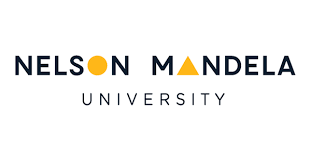Nelson Mandela University: The first university to legally operate drones for a better world
Nelson Mandela University became the first university in South Africa to legally operate drones. This achievement brought it a step closer to realising its vision of offering a diverse range of life-changing educational experiences for a better world.
The establishment of our Drone unit allows the School of Engineering to provide both under- and post-graduate students the opportunity to gain specialised skills in a technical environment that supports not only the South African community, but also the niche market of drone operations. We can also support other parts of the University, from Ocean Sciences to Technical Support Services.
The strategic importance of having a bird’s eye view
“This breakthrough is of strategic importance to the University. We now have the ability to collect data in the form of aerial imagery at a much higher rate than ever before. This enables us to understand and manage large scale projects that are linked to the community, much faster. Fisheries, illegal poaching, whale populations, forestry and fire control are a few examples of what will benefit from having a bird’s eye view,” said Karl du Preez, Principal Lecturer and Director of the University’s Advanced Mechatronic Technology Centre (AMTC).
The significance of this achievement does not only impact the University, its stakeholders, and the South African community, but also the world.
• University researchers and staff, within our six campuses and associated faculties, will have access to professional drones and crew, without the related expenses. The list of University clients needing drone access is growing daily. Ocean Sciences needs assistance with the collection of mucus samples from the spray of whales, Zoology with measuring the greenhouse effects associated with different grazing foliage, Architecture with land surveying of historic sites that are not accessible by road and Maintenance with high quality images of roof tops and areas difficult to reach for maintenance.
• The AMTC will benefit with a new discipline in its teaching and research portfolio. It has already developed two short courses to train drone technicians to prepare for the possible shortage of qualified technicians as the drone industry grows in South Africa. Internationally the AMTC has collaborated with industry leaders to offer online courses too.
• Employment – The corporate nature of the University’s Remotely Piloted Aircraft System (RPAS) Operating Certificate (ROC) means that we will not compete with or sell our services to industry. By collecting research data and partnering with commercial groups we aim to generate employment opportunities that were not thought of before.
• Economic growth – Through collaboration with industry we will help to grow drone technology in South Africa, contributing to economic growth.
• Drone production and maintenance – The development of drones within the University is aimed at the commercial sector. We can collaborate with industry on an IP sharing basis to grow the drone production and maintenance sector of industry, which is currently not well-represented in South Africa. We are also involved in the design, manufacturing and testing of drones that are specific to South African farming and security needs.
• Design concepts – With patents already in place, the University is on the verge of being able to offer the world design concepts for new heavy-lift drones that could be used in long range payload delivery scenarios such as disaster management and famine relief.
• Drone products – Our focus on real world drone solutions means that we are able to offer products that can be commercially produced and used in world relevant research and support.
“The ROC allows us to operate within all South African airspace, including controlled airspace or airports. This means that the flights will occur where they are needed to support researchers and students. The central hub of deployment will be at the University’s North Campus with AMTC being the maintenance centre.”

